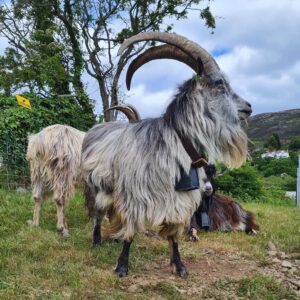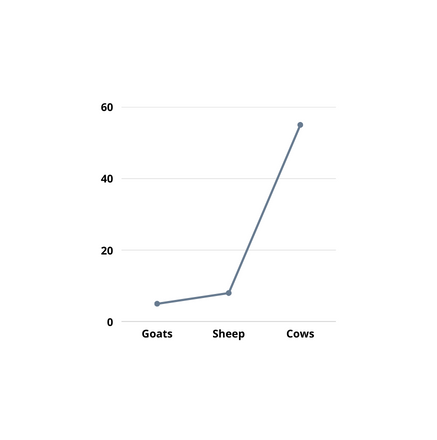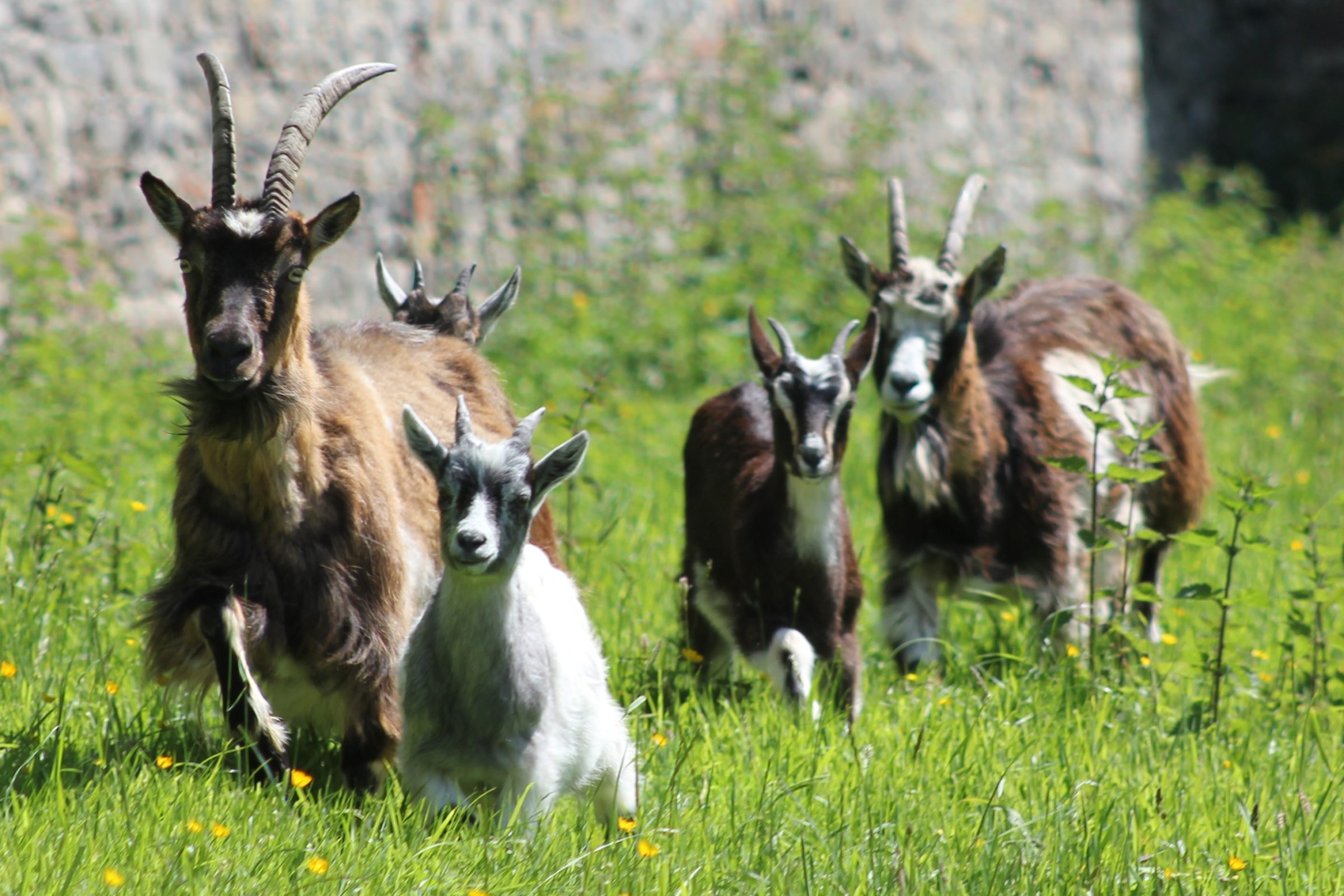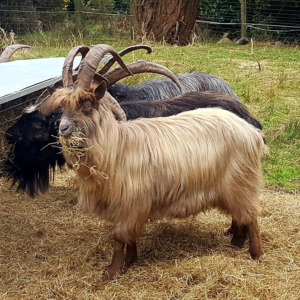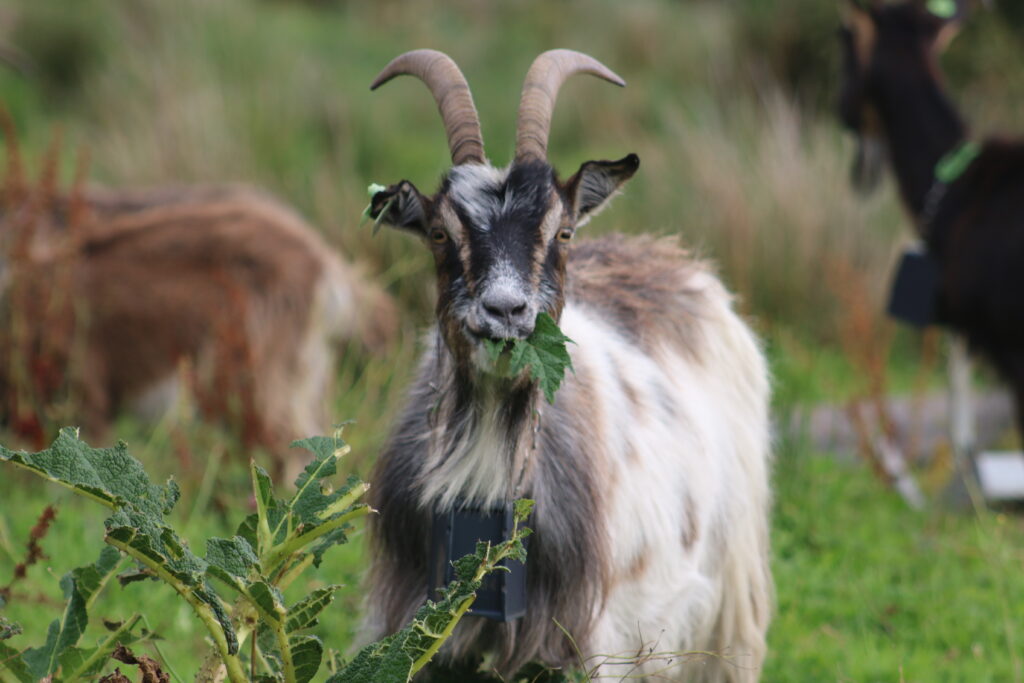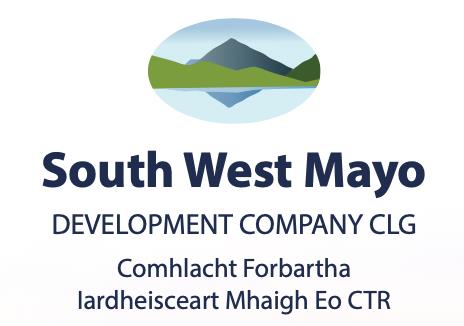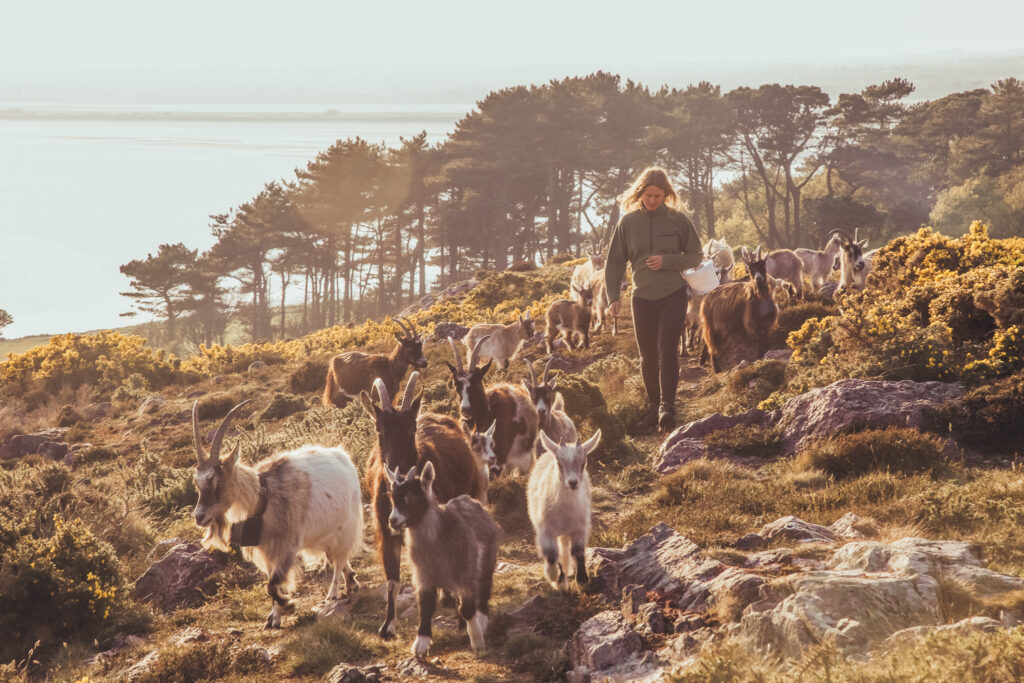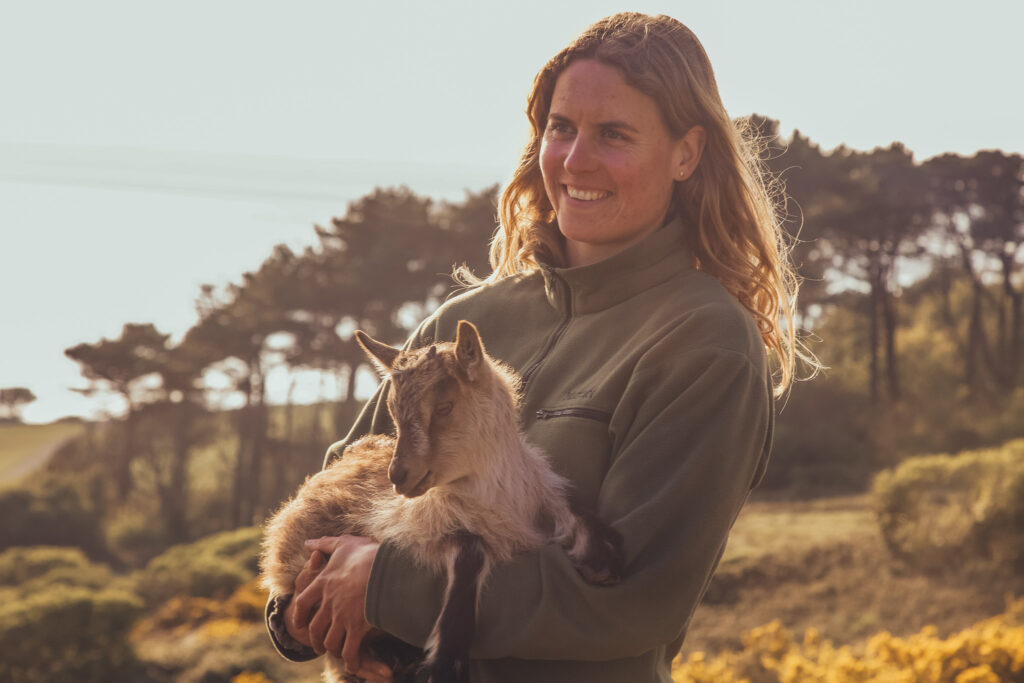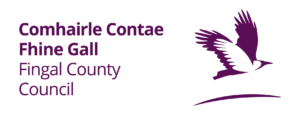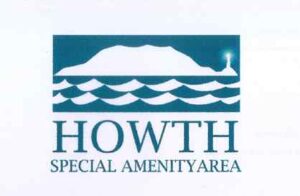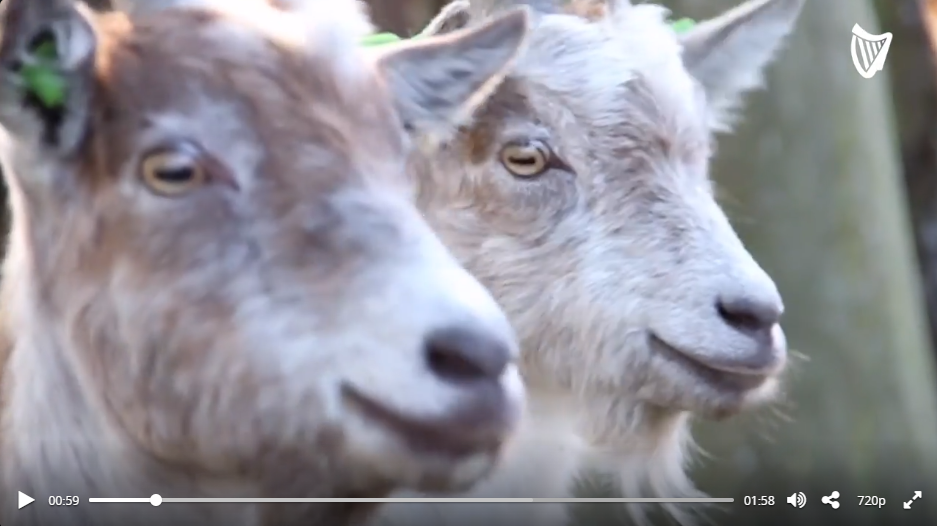The Old Irish Goat, arrived with neolithic settlers c 5,000 years ago. It is a landrace breed which has evolved and perfectly adapted to the climate and the landscape. A cold-weather goat, it is armed with a thick cashmere undercoat under a water-resistant long outer-coat. This helps it to keep warm and dry in cold or wet weather. It naturally sheds this cashmere layer in summer to accommodate the change in seasonal temperatures . This maintenance free adaptation facilitates all-year-round grazing.
Although we use the term Conservation Grazing, goats in fact are not grazers they are browsers. They prefer a variety of forage and like to consume small amounts of food and move on to another target. This type of grazing-behaviour negates any possibility of over-grazing once managed. This is achieved through site and task assessment, and stategic stocking-level control. The Old Irish Goat unlike modern breeds can thrive on wild-forage alone, making for a hardy, independent and hard-working ally.
For the last 2 years we have successfully utilised the Old Irish Goat, in Conservation Grazing. They have demonstrated their value in invasive-species control, gorse-management, grassland & healthland management and wildfire prevention! We are the first in Ireland to use a virtual-fence system, allowing for targeted management of the sites they work on. This means there is no additional fencing or unnecessary land/habitat disturbance. Moreover it enables strategic focus on their grazing target. It is a brilliant and inspiring symbiosis of ancient and modern technology
